When you first see the Giant’s Causeway stretching along Northern Ireland’s Antrim coast, you might think it’s artificially constructed. The 40,000 hexagonal basalt columns fit together so perfectly that it’s hard to believe nature created them. This UNESCO World Heritage site combines dramatic coastal scenery with fascinating geological formations, all wrapped in Irish folklore about giants striding across the sea to Scotland.
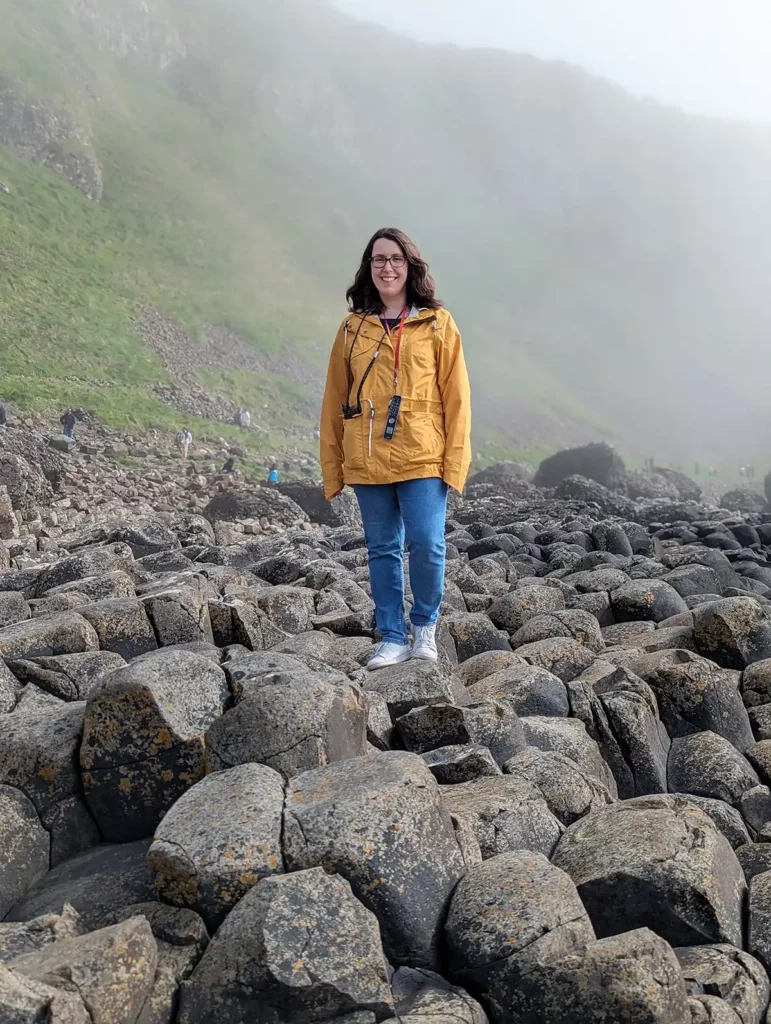
This guide will help you plan every aspect of your visit, from getting there to discovering the causeway’s most distinctive features.
Visiting the Giant’s Causeway
The Giant’s Causeway is one of the most famous places to visit in Northern Ireland and a highlight of the Causeway Coastal Route which stretches up the north coast of the island of Ireland.
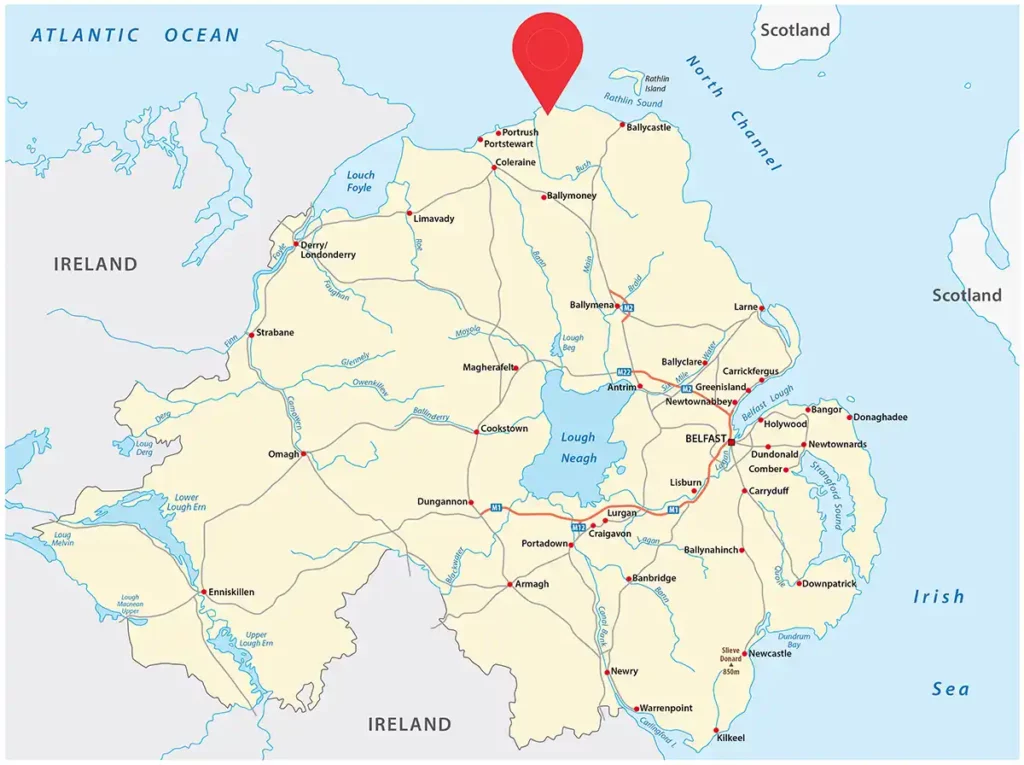
I visited the Giant’s Causeway in May 2024 and was absolutely entranced by the rock formations, the legends that surround the site and the majesty of the Atlantic waves crashing against the basalt columns.
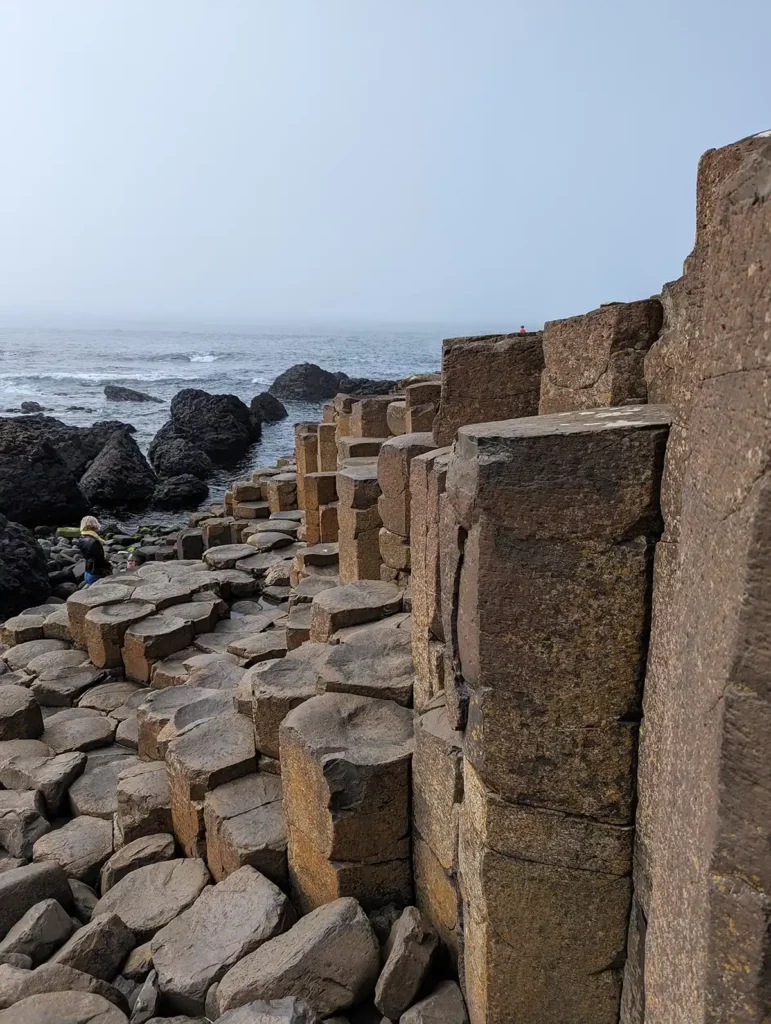
The legend of Finn MacCool
When you visit the Giant’s Causeway, you’re walking in the footsteps of giants – at least according to Irish folklore. The most famous tale features Finn MacCool (Fionn mac Cumhaill), an Irish giant who built the causeway to reach Scotland and confront his rival, the Scottish giant Benandonner.
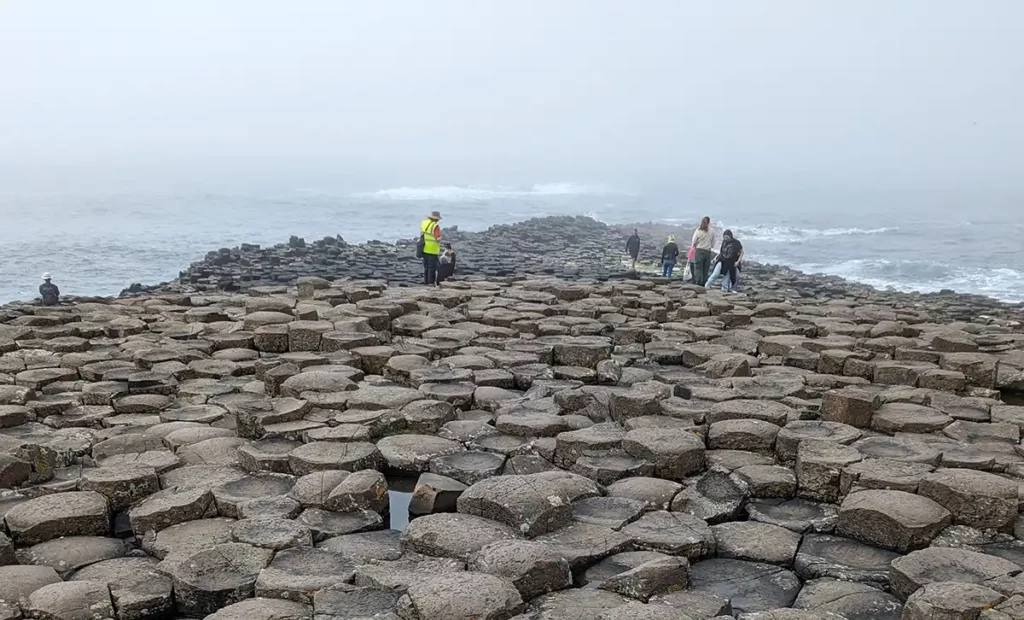
As you explore, you’ll discover how each distinctive rock formation plays a part in the story. The legend tells that when Finn MacCool finally saw the size of Benandonner, he realised he’d badly underestimated his opponent’s strength. Finn ran home to Ireland, where his quick-thinking wife Oonagh disguised him as a baby in a giant cradle.
When Benandonner arrived and saw the enormous ‘baby’, he had a terrifying thought: if this was the size of the baby, how massive must its father be? The Scottish giant fled back home in fear, destroying the causeway behind him so Finn couldn’t follow. You can still see the same hexagonal rocks on the Scottish isle of Staffa – proof, some say, that the legend might have a grain of truth.
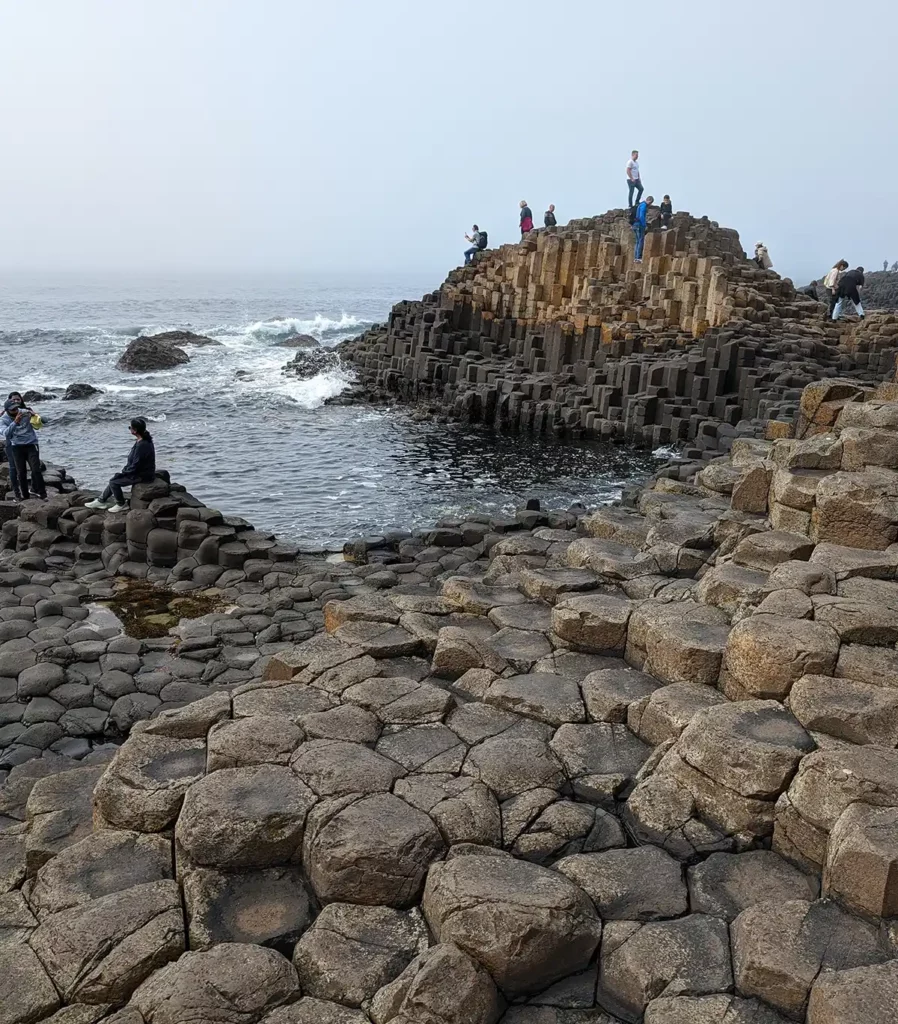
Giant’s Causeway visitor centre – is it worth it?
The site is looked after by the National Trust, and the first thing you’ll see as you arrive is the large National Trust visitor centre and car park. It’s a slightly odd situation; access to the site itself is free, but there’s a fee to use the visitor centre and car park, and although you might expect the exhibition part of the visitor centre to need a ticket, the cafe, shop and toilets are also all off-limits unless you pay for a ticket.
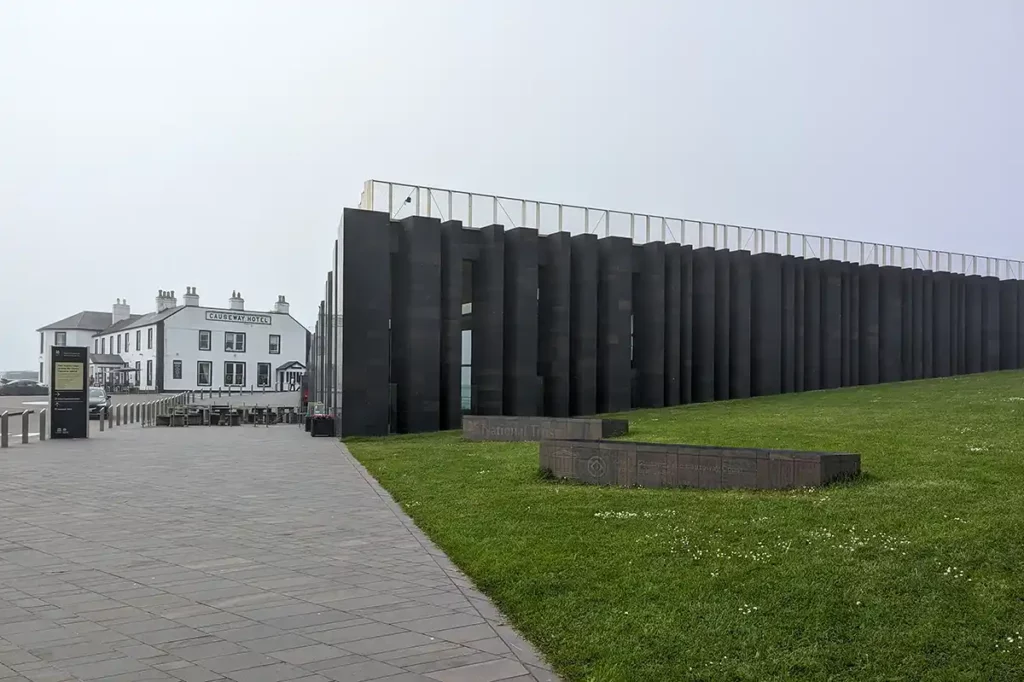
I’d just signed up for National Trust membership down the road at Carrick-a-Rede rope bridge, so I didn’t need to pay any extra for parking or entry. I also got an audio guide included although to be honest I ditched it pretty quickly!
If you’re not a member, adult tickets are £15.50 at peak times and £14.00 at off-peak, quieter times. Personally, I don’t think the extra cost is really worth it for non-members, although access to the exhibition, cafe and indoor toilets is nice to have. There are other car parks nearby which charge £10 per car, there are other toilets and the Causeway Hotel next door serves food and takeaway drinks and snacks.
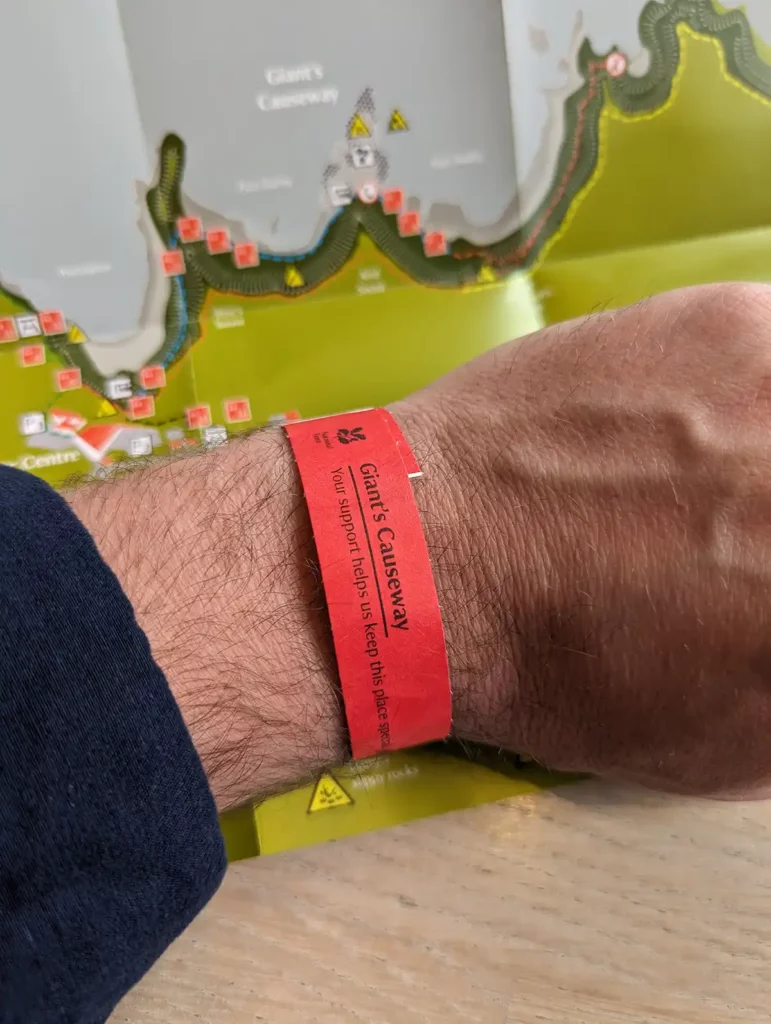
Getting down to the Giant’s Causeway
Behind the visitor centre, a road with a footpath alongside leads you down to the Giant’s Causeway. The walk takes around 20 minutes and is a moderately steep slope down to the shoreline where you’ll find the hexagonal columns.
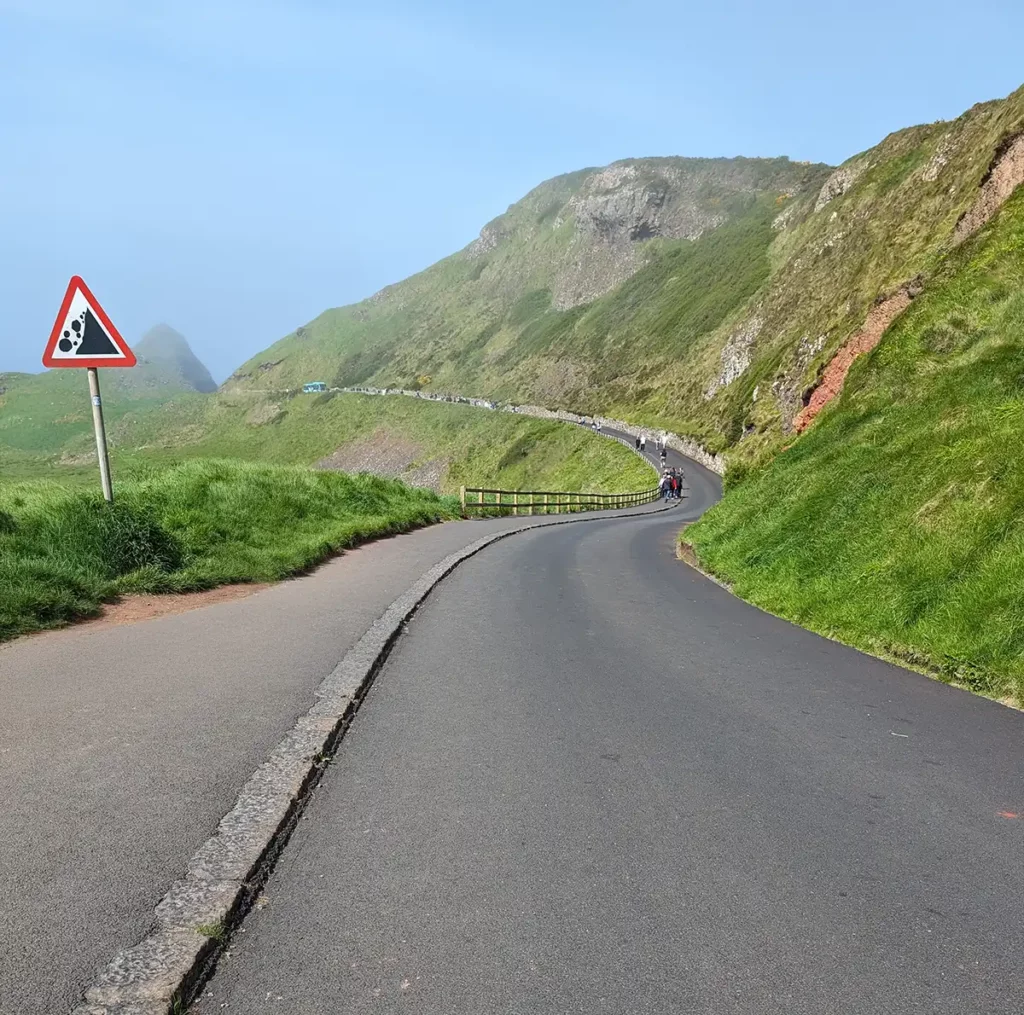
If you, or anyone in your party, doesn’t feel that the walk is manageable, then a shuttle bus makes the journey between the visitor centre and the Causeway regularly. Tickets cost £1 each way (free for National Trust members).
On your way down you’ll pass Portnaboe (Bay of the Cows) and the twin-humped Great Stookan rocks, which are said to resemble either a camel or two old ladies stooping as they climb the hill.
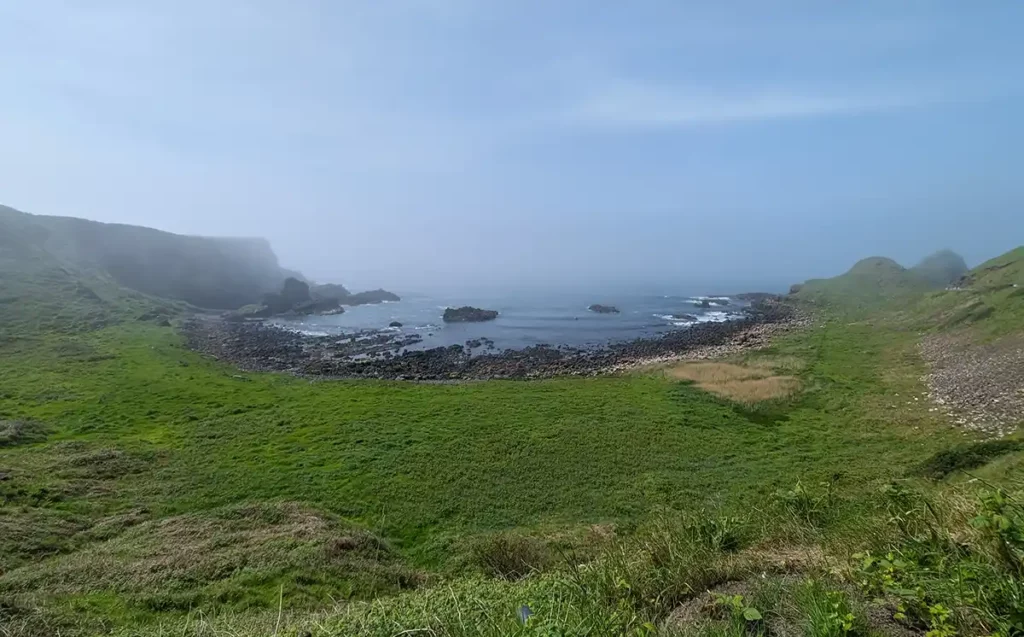
The next bay is Port Ganny, with some very impressive rock formations of its own, but it’s hard to compete with the main event as the thousands of hexagonal columns of the Giant’s Causeway come into view.
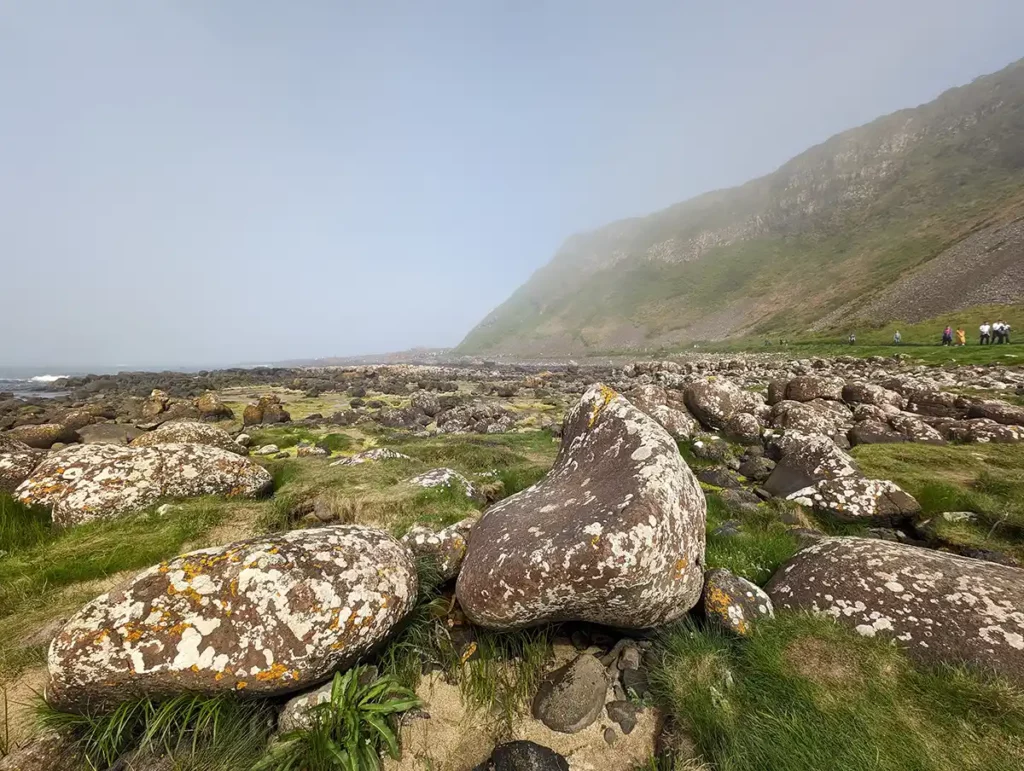
You’re free to clamber over the rocks as much as you like and in whatever direction you like. The rocks weren’t quite as perfectly hexagonal as I’d imagined, but it’s an incredible sight – I’d seen basalt columns before on the south coast of Iceland but the sheer number and scale of the ones at the Giant’s Causeway are something else.
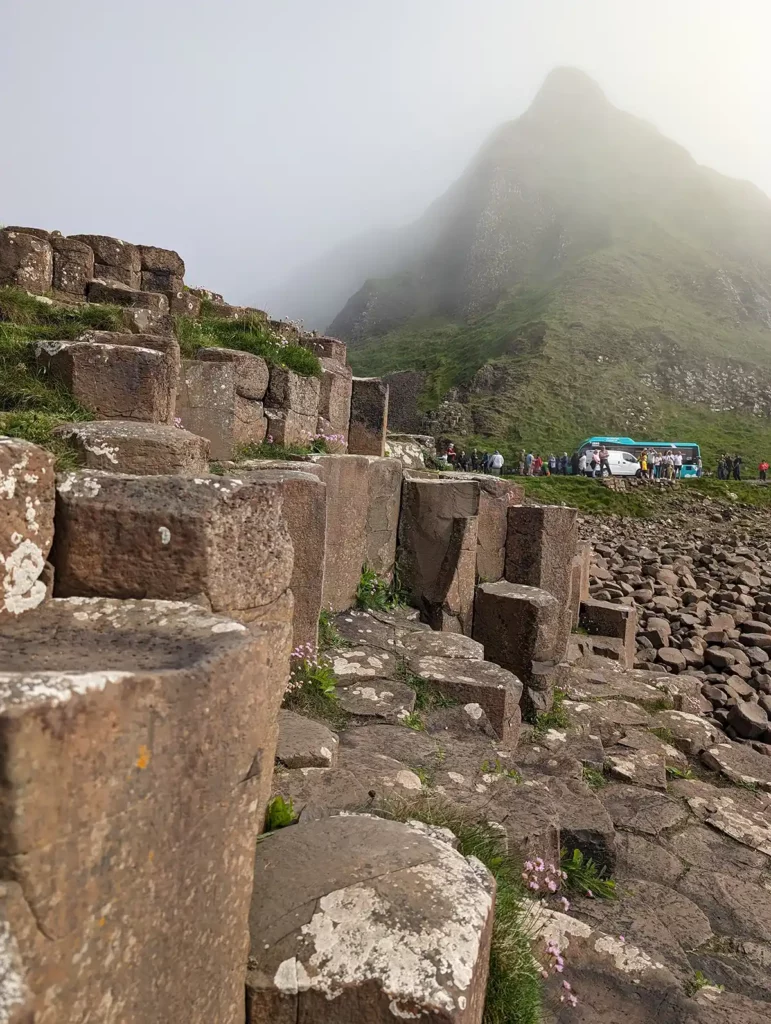
The rocks have caught people’s imagination for generations, and their evocative forms have been given names like the wishing chair, the giant’s organ, the chimney stacks, the lady’s fan, the giant’s eye and more. On my visit we had fun trying to identify them – I’m not entirely sure we got them all right!
For the fullest experience, take the Red Trail, which needs about two hours of your time. You’ll see all the major formations while following the dramatic coastline. If you’re short on time, the Blue Trail will take you directly to the main causeway area in about 20 minutes from the visitor centre.
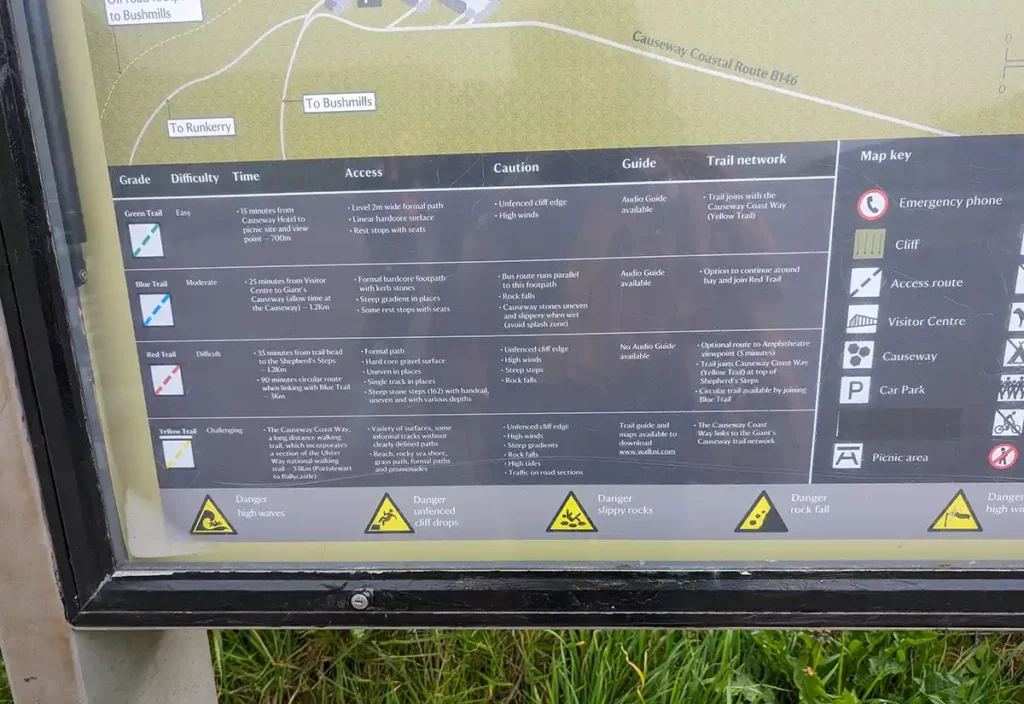
How to get to the Giant’s Causeway
The Giant’s Causeway is 60 miles north of Belfast on the northern section of the Antrim coast – also known as the Causeway Coast.
Top-rated Giant’s Causeway tours
From Belfast: Giant’s Causeway Full-Day Guided Trip
By car
I highly recommend hiring a car to drive the Causeway Coastal Route. The whole route up the Antrim coast is absolutely stunning and packed with things to see, including the Gobbins cliff walk and the Carrick-a-Rede rope bridge, along with castles, beaches, picturesque villages and Game of Thrones filming locations. I drove the route in May 2024 and it was an easy drive.
Would you like to save this?
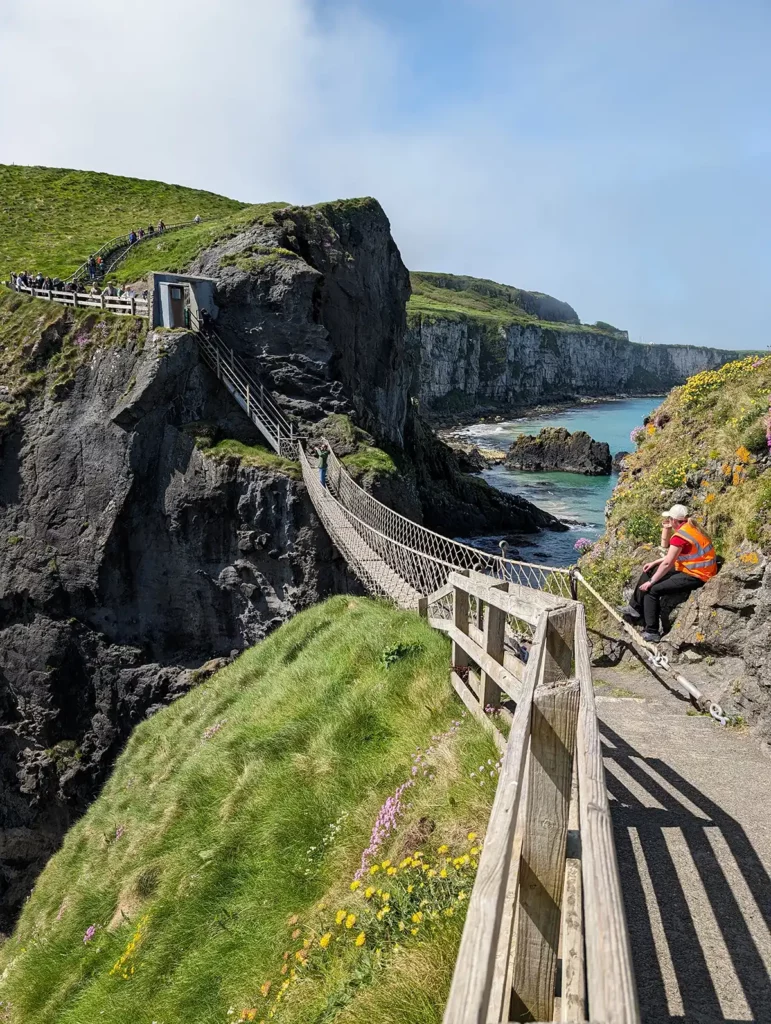
I’ve written a complete post about doing the Causeway Coastal Route as a road trip with lots of (hopefully!) helpful tips and advice, along with a full guide to where to stop on your way up the Antrim Coast.
By public transport
You’ll find the Giant’s Causeway 60 miles north of Belfast on the Antrim coast. The Translink 221 bus service runs from Belfast to the Giant’s Causeway, with three services on weekday mornings and two services on Saturday and Sunday mornings. The journey takes around 1 hour 30 minutes and is covered by the iLink day ticket which costs £20 for adults.
Alternatively, you can take a train from Belfast to Coleraine, then transfer to the 402 bus to get to the Giant’s Causeway (heading towards Bushmills). This route also stops at some of the other visitor attractions along the northern part of the Causeway Coast, including Portrush, White Rocks beach and Dunluce Castle.
On a guided tour
One of the most popular ways to visit the Giant’s Causeway is on a guided tour, either from Belfast or from Dublin.
Guided tours from Belfast
This Giant’s Causeway bus tour from Belfast also includes stops at Cushendun Caves, Carnlough Harbour, the Dark Hedges, the Old Bushmills Distillery and the Carrickfergus and Dunluce castles, so gives you a good overview of the attractions on the Causeway Coast.

Guided tours from Dublin
Since Dublin is further south than Belfast and travel times are longer, day trips from Dublin tend to include fewer stops, but you’ll still see some wonderful scenery on the way. Many tours also give you the chance to spend some time in Belfast.
This Giant’s Causeway tour from Dublin includes at least 2 hours at the Giant’s Causeway, plus photo stops at Dunluce Castle and the Dark Hedges, before heading to Belfast for sightseeing and shopping.

This Giant’s Causeway and Titanic Museum tour from Dublin is a long day at 14 hours but includes the Causeway, Dunluce Castle, the Dark Hedges and entry into Belfast’s iconic Titanic Museum – if you don’t have much time in Ireland this could be an excellent option.
Planning your trip
When to visit
I think the best time to visit is May or September, when you’ll typically find mild weather and smaller crowds. Summer (June, July and August) gives you the longest daylight hours but brings peak visitor numbers, while winter rewards you with dramatic wave displays and occasionally frosted stones.
If you want the best experience, try to arrive before 10am – you’ll find fewer people and generally better lighting for photos. The site gets busier from mid-morning, especially when tour buses arrive from Belfast and Dublin. If you’re planning to visit the visitor centre and park in the on-site car park, National Trust encourage you to book a time slot online, but it isn’t essential in the way it is at the Carrick-a-Rede rope bridge.
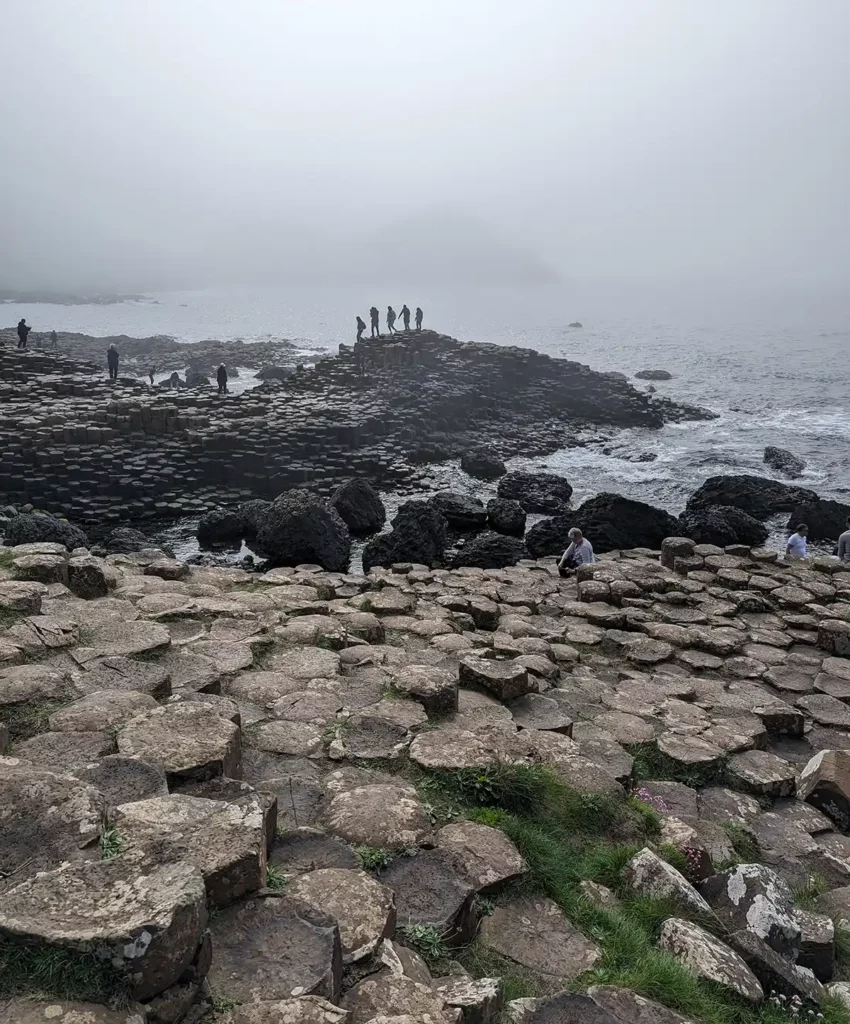
The Giant’s Causeway itself is open from dawn to dusk year-round. Since Northern Ireland (and the British Isles in general) are surprisingly far north, actual times vary a lot depending on the time of year. In June, dawn is just before 5am and sunset is at around 10pm, while in December, dawn can be as late as 8:46am and sunset is around 4pm.
The National Trust visitor centre opening hours are also seasonal. In summer (March to October) the visitor centre is open from 9am to 5pm, while in winter it’s open from 9am to 4pm. The visitor centre car park has the same hours as the visitor centre, but I suspect that’s just for entry – I was able to get out of the car park after the visitor centre closed. Please don’t come for me if you get stuck though!
Weather
Keep in mind that weather significantly affects your visit. The columns are uneven and can become slippery in wet weather, and there’s no cover down at the Giant’s Causeway itself. You could opt for the shuttle bus to get up and down from the stones if you want to limit the time you spend out in the rain. In winter, strong winds might limit access to certain areas.
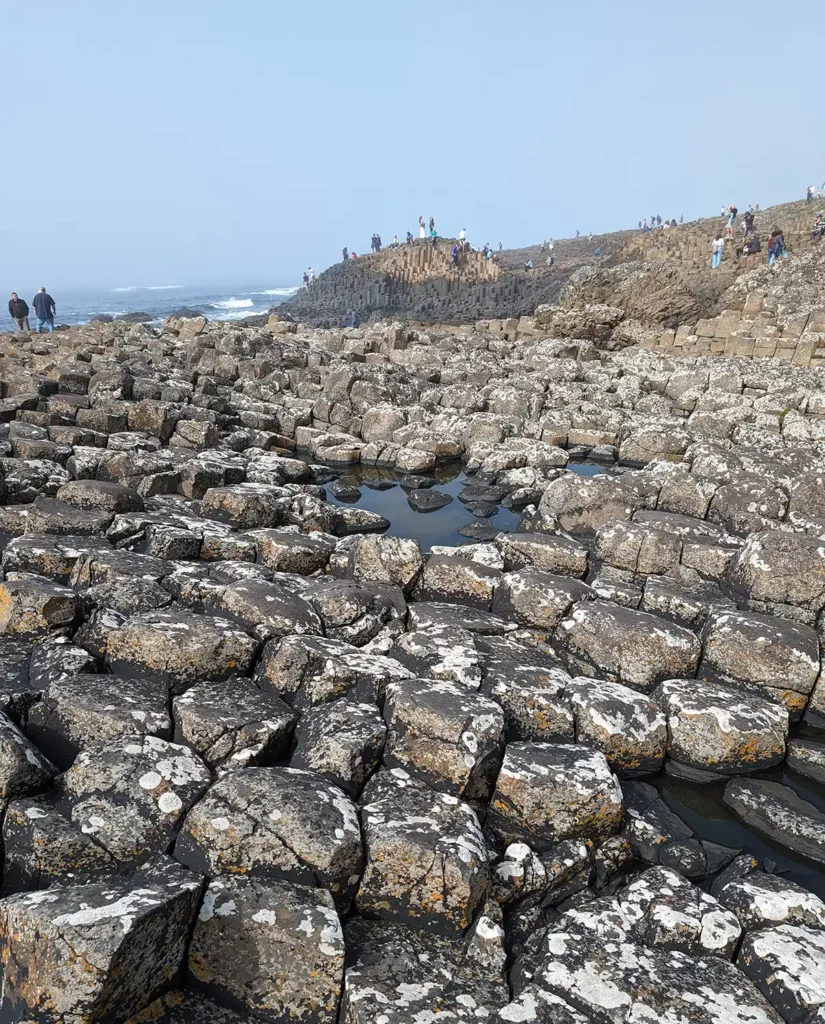
The visitor centre is fully covered and has some moderately interesting exhibitions, but it’s no substitute for actually seeing the Causeway. If you can, try to visit on a dry day. I visited on a dry, sunny day in late spring, but a mist had rolled in off the sea. It limited visibility a bit but made all the rock formations look very atmospheric – perfect for a setting like this that’s so rich in myths and legends.
Even in summer, you should pack sturdy shoes as spray from the sea can make the rocks slippery even on dry days. It’s a good idea to bring layers year-round as the coastal weather can change quickly.
Accessibility
If you use a wheelchair, you’ll find the visitor centre fully accessible with level entrances and accessible toilets, including a Changing Places facility. While the main causeway area presents challenges due to uneven terrain, you can enjoy excellent views from a viewing platform near the bus drop-off point.

The shuttle bus accommodates wheelchairs, and staff can help you plan the most suitable route for your needs. There’s a full guide to the site on the AccessAble website.
More places to see near the Giant’s Causeway
Northern Ireland’s Causeway Coast is packed with amazing natural attractions, and visiting the Giant’s Causeway is easy to combine with nearby sights. Here are some of the best places to visit near the Giant’s Causeway.
- Carrick-a-Rede Rope Bridge, 7.5 miles, 16 minute drive
- Dunluce Castle, 4.4 miles, 10 minute drive
- White Rocks Beach, 6.1 miles, 13 minute drive
- Dark Hedges, 11.4 miles, 19 minute drive
- Ballintoy harbour, 7.1 miles, 14 minute drive
All distances are from the Giant’s Causeway visitor centre.
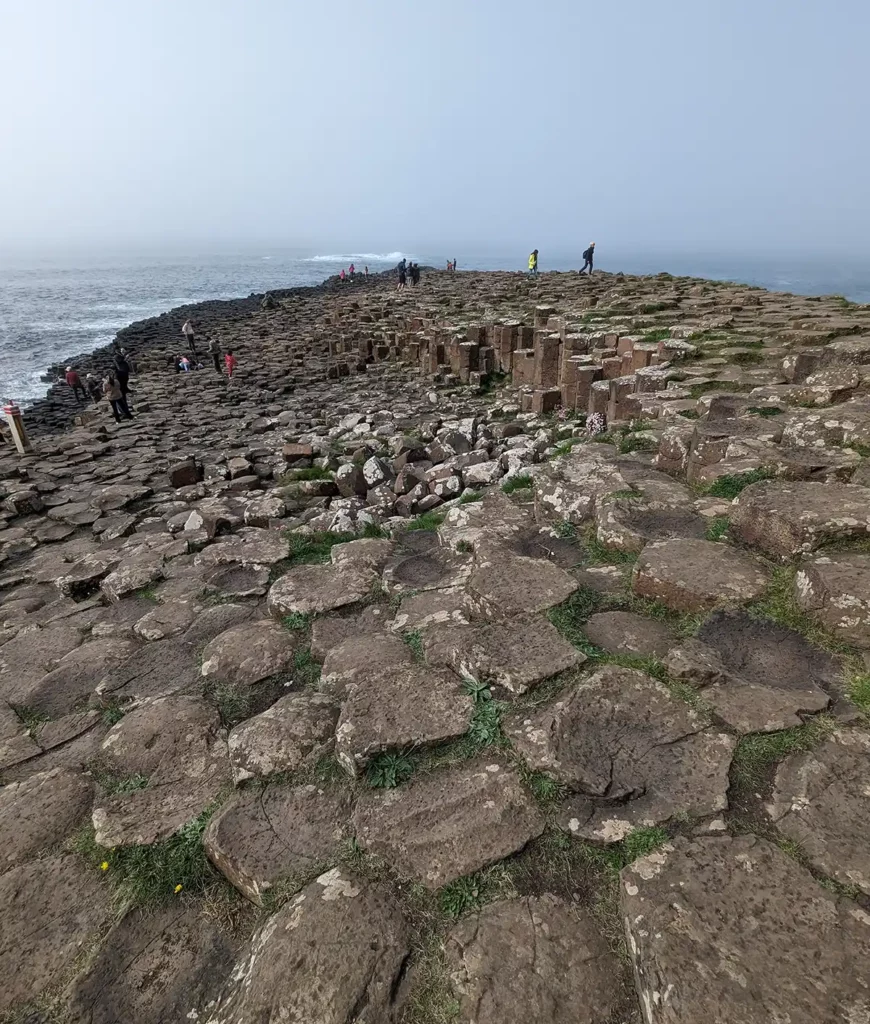
In summary
The Giant’s Causeway offers you a glimpse into a landscape millions of years in the making. Whether you’re fascinated by geology, drawn to mythology, or simply want to experience one of nature’s most extraordinary creations, good planning will help you make the most of your visit to this remarkable site.
Will you visit the Giant’s Causeway?

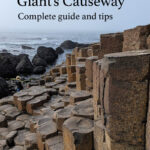
Brilliant website Helen. Crystal clear photos.
Thank you,
John
Thank you John, comments like this really make my day!